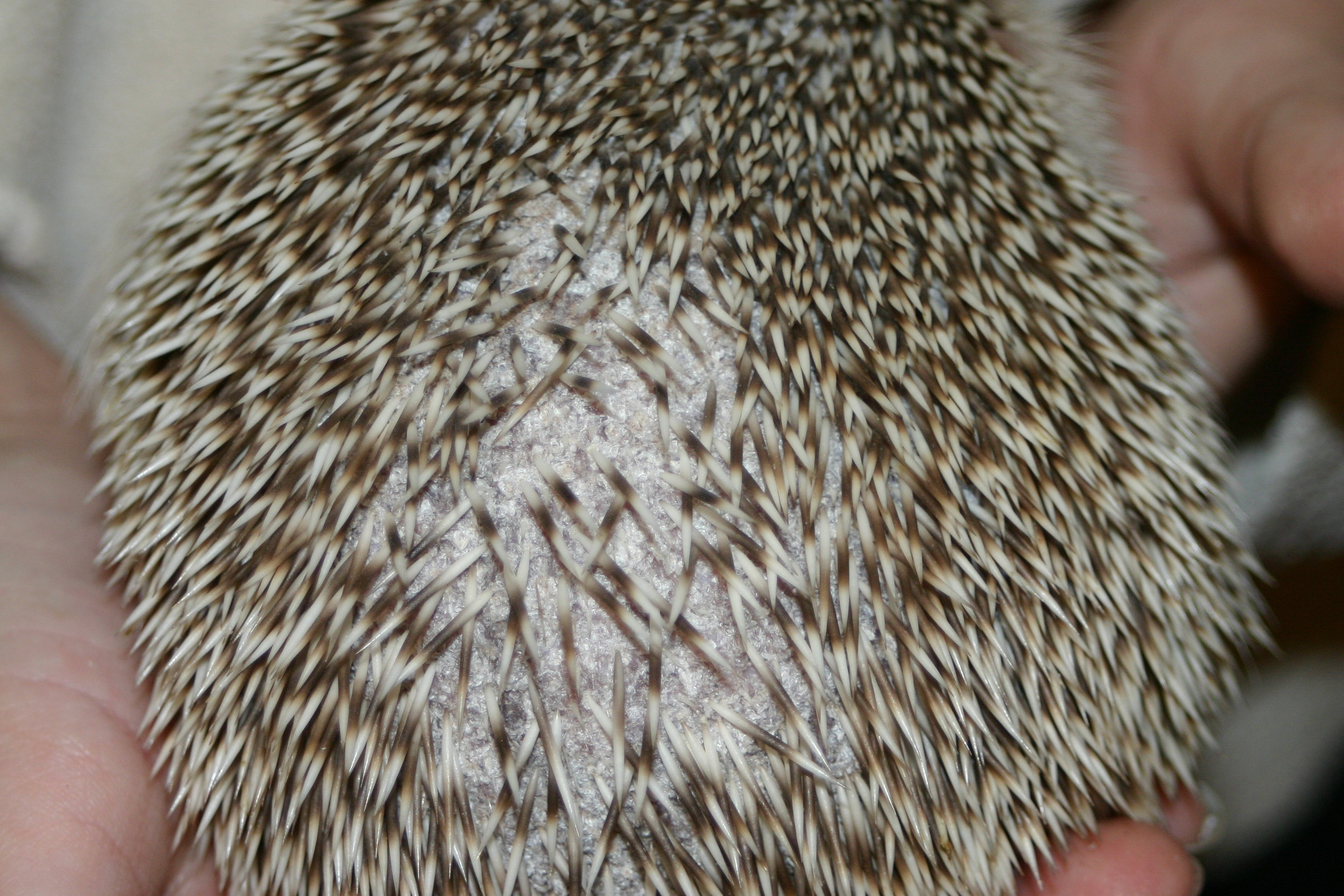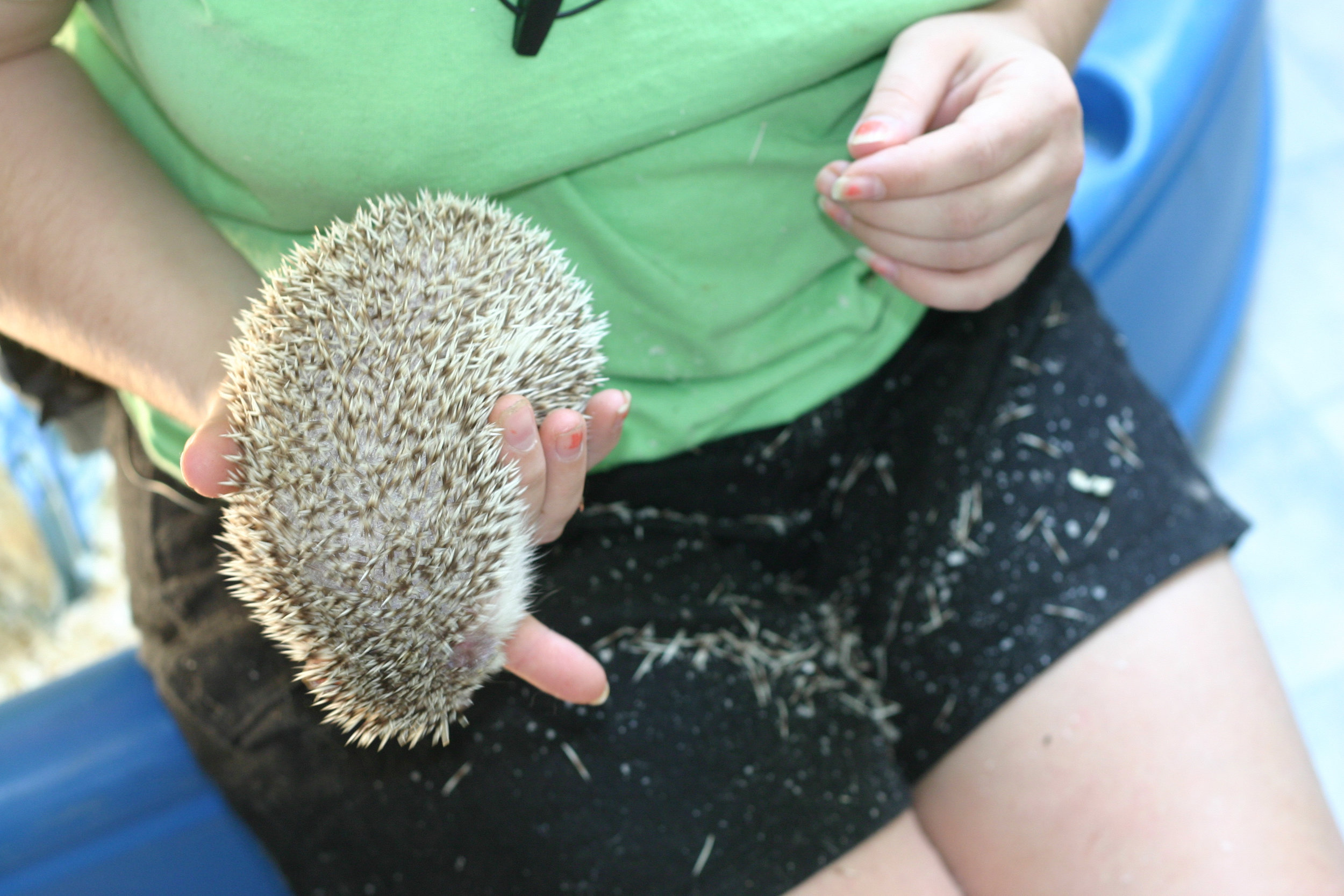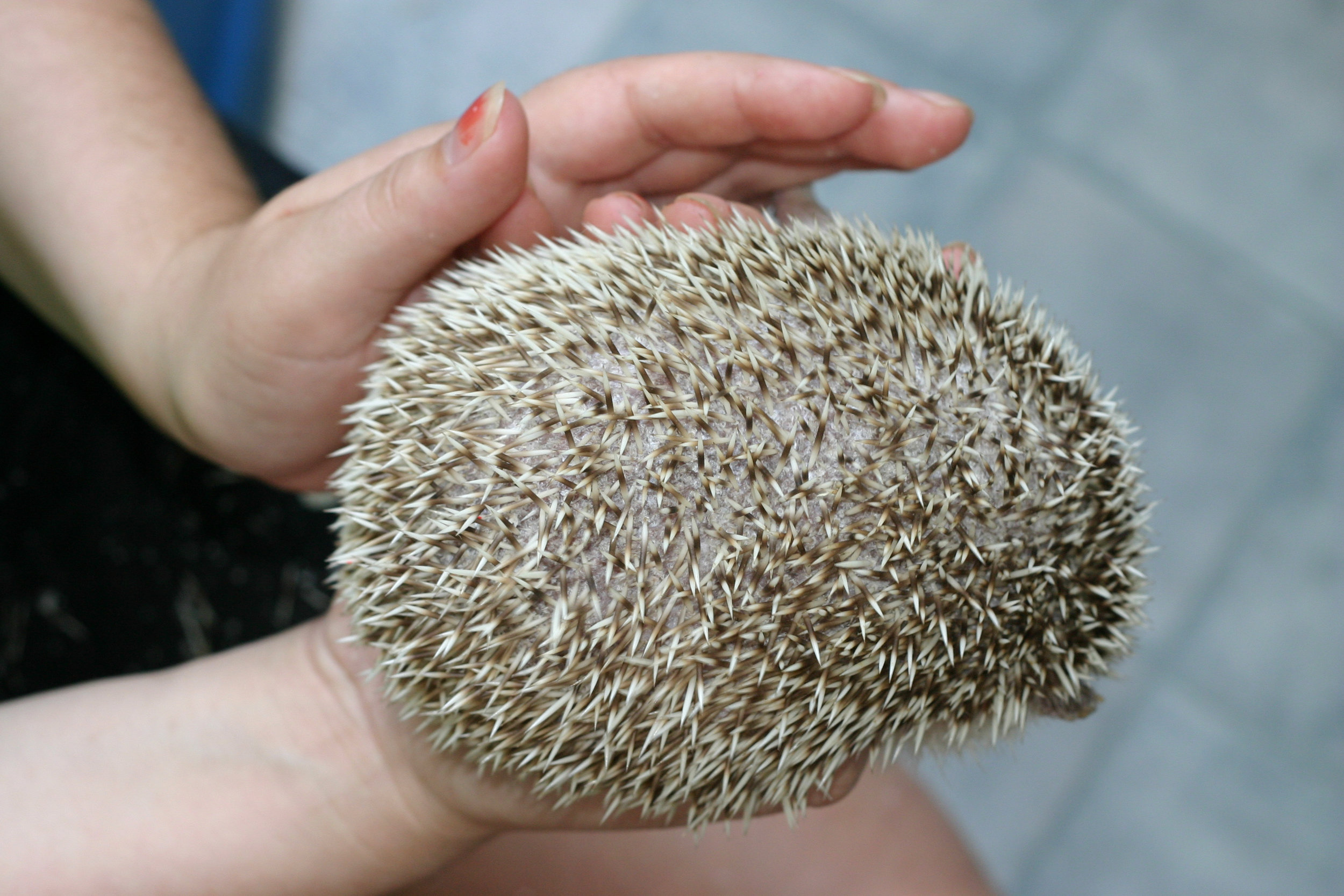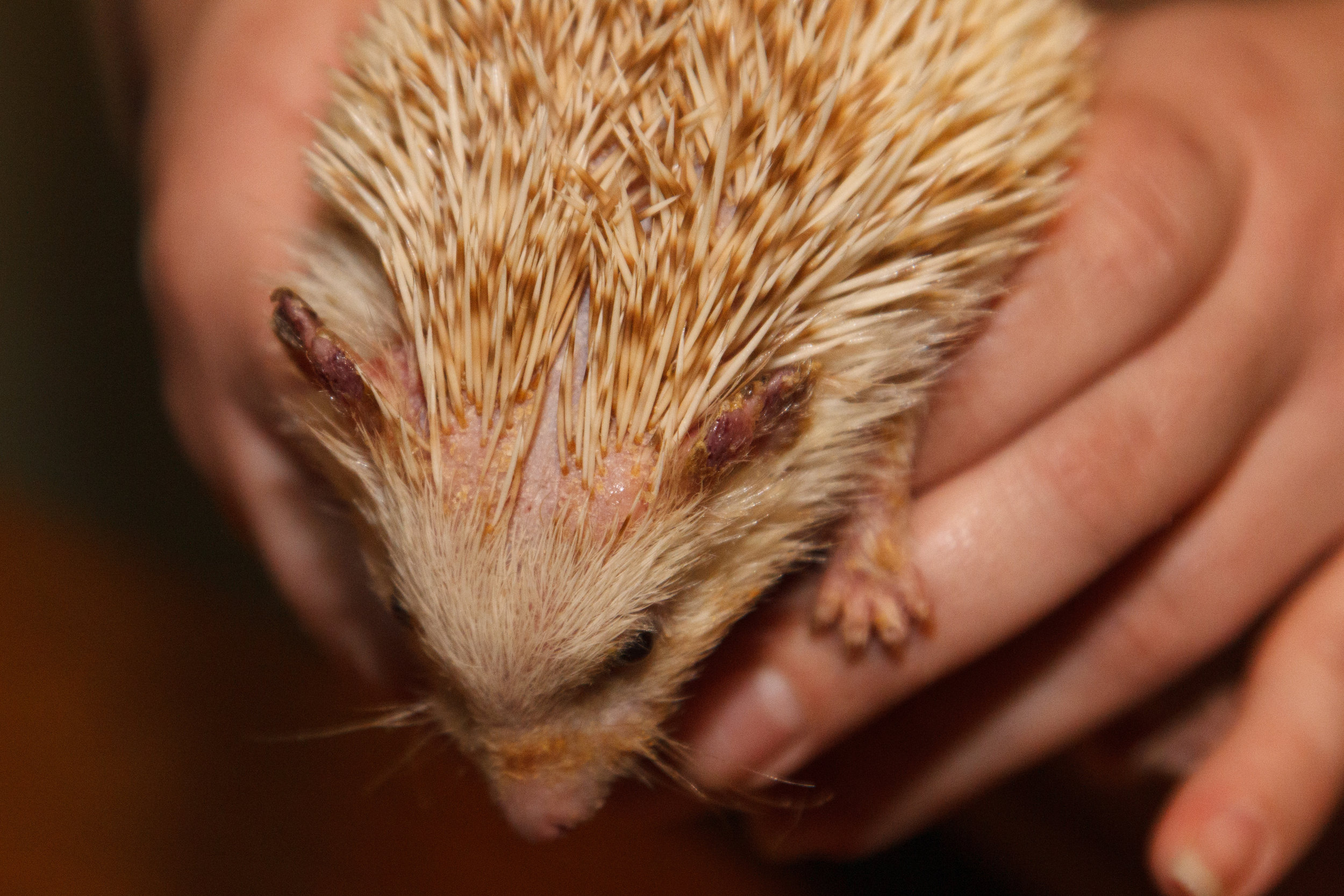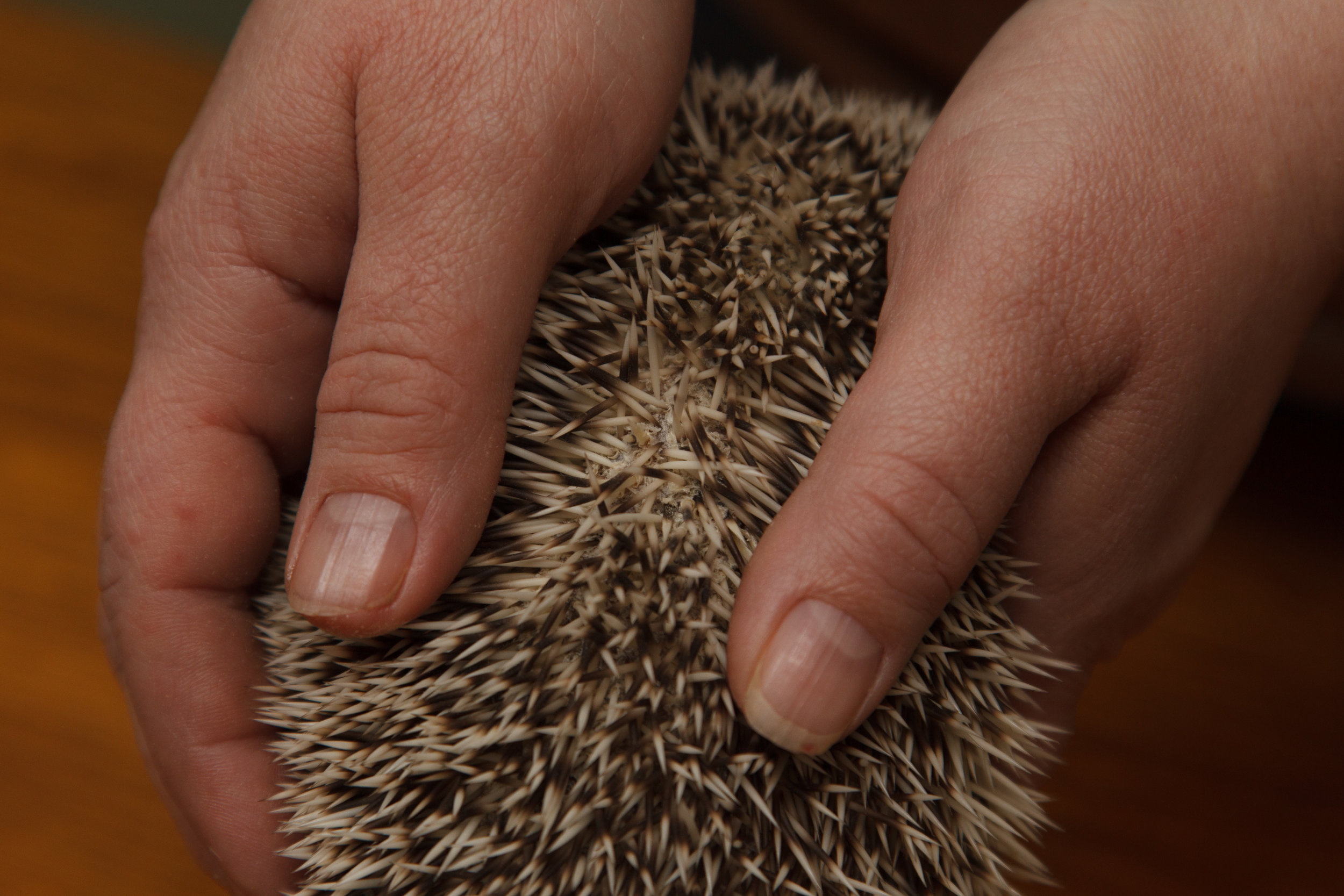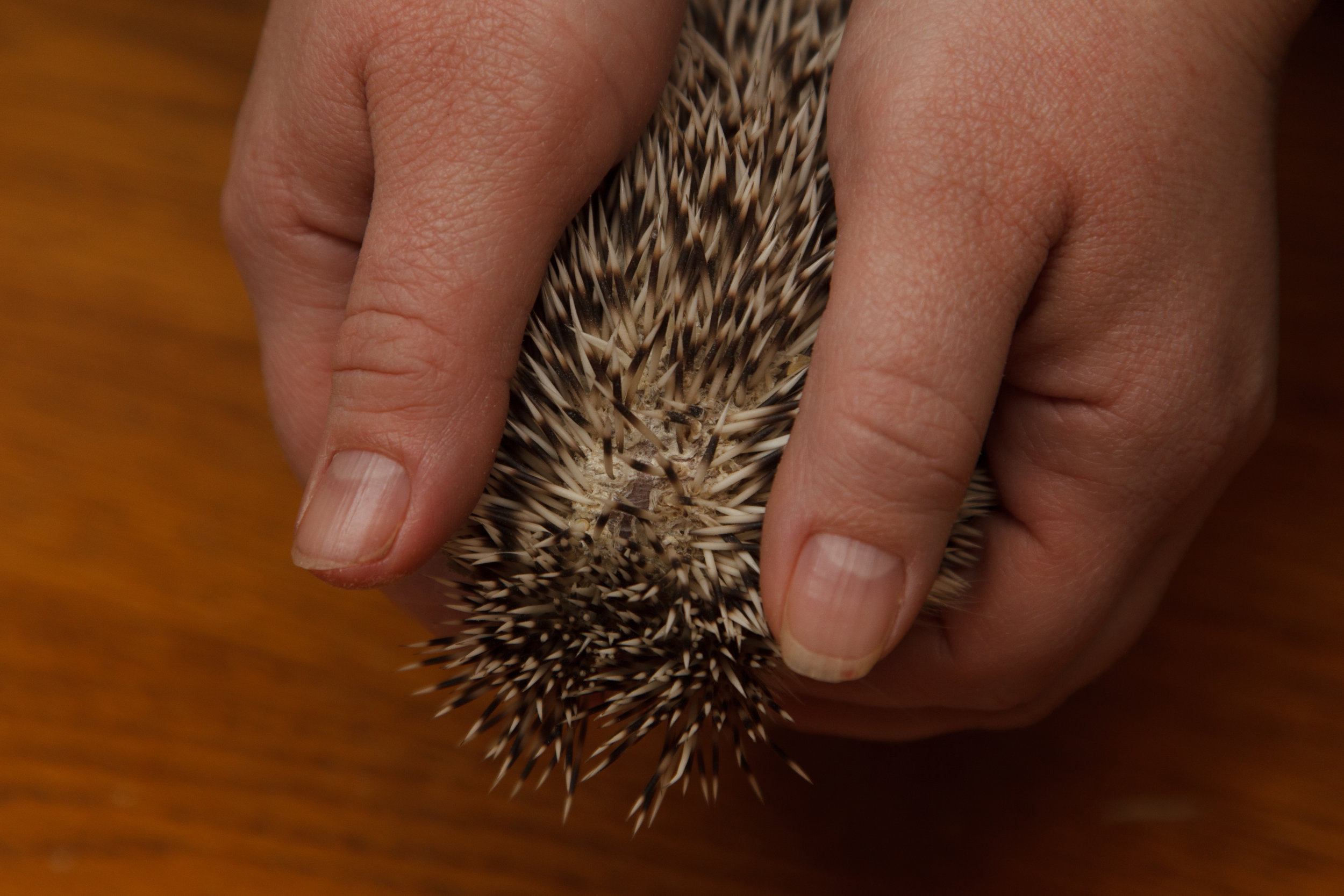Oh No! Does My Hedgehog Have Mites?
KNOW THE SIGNS
Treat with REVOLUTION® (selamectin)
Hedgehog Supplies
What does it take to take care of a hedgehog? Be sure to check out the Supplies page, featuring favorite products used and recommended by Hamor Hollow Hedgehogs.
Know the signs and visit your veterinarian
While mite infestations are not common you may have to deal with one or two throughout the life of your hedgehog. It’s important to be aware of the signs and to seek out immediate treatment from a knowledgeable exotics veterinarian.
Do not bathe or use any oil on your hedgehog before seeing your vet as this may make it difficult for them to identify the mites when they do a skin scraping.
POSSIBLE SYMPTOMS
Constant itching or scratching due to extremely dry flaky skin, or crustiness around the eyes
Concentrated quill loss, most commonly on the hedgehog’s back
While mites are usually under the skin, in more severe cases they may be visible to the naked eye and might be seen crawling around on the hedgehog, enclosure, and/or bedding
NOT EVERY ITCH AND SCRATCH IS DUE TO MITES
Since hedgehogs have naturally dry skin and tend to itch and scratch on occasion, don’t stress over the first signs of an itchy hedgehog. When a younger hedgehog is quilling they tend to scratch often due to the discomfort of the new quills breaking through their skin.
But extreme quill loss from a concentrated area is a sure sign of an advancing infestation of mites or topical yeast infection and you should seek veterinary treatment immediately.
Catch it early
The earlier you catch the infestation and have your hedgehog treated, the easier and quicker the mites are to get rid of. If you delay or refuse to seek treatment, in extreme cases, the infestation could lead to total quill loss and/or the eventual death of the hedgehog.
Your vet may be able to positively identify the mites via a skin scraping, but sometimes those little suckers are too fast and sneaky to be caught.
Treatments
Currently, most breeders are advising treatment of mite outbreaks with REVOLUTION® (selamectin).
A single topical treatment of REVOLUTION® (selamectin) will last a full 30 days and will outlast the life cycle of any mite. See your vet for dosage information and for a prescription for REVOLUTION® (selamectin).
In most cases, REVOLUTION® (selamectin) should kill off the mites within 24 hours and quill growth may be seen within two weeks. Some infestations, especially those allowed to progress without proper vet care, may require a second treatment.
But not all treatments are created equal
TOXIC AND FATAL REACTIONS
Do not treat the infestation with Ivermectin/Stromectol as many hedgehogs have a toxic reaction due to overdose which may lead to death. Sometimes after the first treatment, but more often after the second or third treatment. Not all vets are aware of this particular overdose risk so it’s your responsibility to request that your vet only treats hedgehogs with REVOLUTION® (selamectin).
THE WRONG CURE IS WORSE THAN THE DISEASE
It’s also important to note that home-remedy mite treatments are either not effective or downright dangerous for hedgehogs. Do not use any over-the-counter mite products as these products have not been designed for and have not been tested on hedgehogs. Some have even been reported as being toxic and possibly leading to the death of your hedgehog.
It is also important to note that mites like cortisone and will reproduce rapidly when it’s used.
Do not use any home-remedy oils or baths that you may read about on the Internet. They are ultimately not effective at eliminating all of the mites. While some home-remedy treatments result in an initial decrease in mites, that may be followed by a population explosion that is even more difficult to cure.
Please be a responsible hedgehog caregiver and immediately take your hedgehog to the vet. The sooner you get to the vet, the quicker and less expensive the outbreak will be to cure.
But where do mites come from?
Mites are hedgehog specific and will not bother you or your other pets. There are two theories on how a hedgehog gets infested with mites.
Mites can be transferred from an outside source such as an infested bag of food, shavings, or directly from another hedgehog.
A few mites are always living on the hedgehog but are mostly dormant until the hedgehog’s immune system is lowered enough for them to reproduce.
A stressed hedgehog may be more likely to get a mite outbreak because their natural defenses may be compromised, similar to a virus attacking a compromised immune system.
Additionally, the reproduction rates of mites increase during cool weather and decrease during hot weather, so preventive treatments are more important during cooler months. The life cycle of a mite can be as short as 10-12 days during the Winter.
Quill loss might not be from mites
If treating your hedgehog with REVOLUTION® (selamectin) is unsuccessful, it may have a topical yeast infection which your vet can identify by performing a skin stain. Topical yeast infections can be treated with KETOCHLOR® Shampoo which is available from your vet.
Your vet will give you instructions on how to properly bathe your hedgehog as part of its treatment. Keeping the shampoo out of your hedgehog’s eyes is critical as KETOCHLOR® Shampoo is an eye irritant. After the bath, cuddle your hedgehog until it’s dry. Please remember that it’s easy to catch a chill after a bath, so take all precautions to keep your hedgehog warm and add extra heat to their enclosure afterwards.
